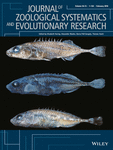Journal list menu
Export Citations
Download PDFs
Cover Image, Volume 56, Issue 1
- Page: i
- First Published: 09 January 2018
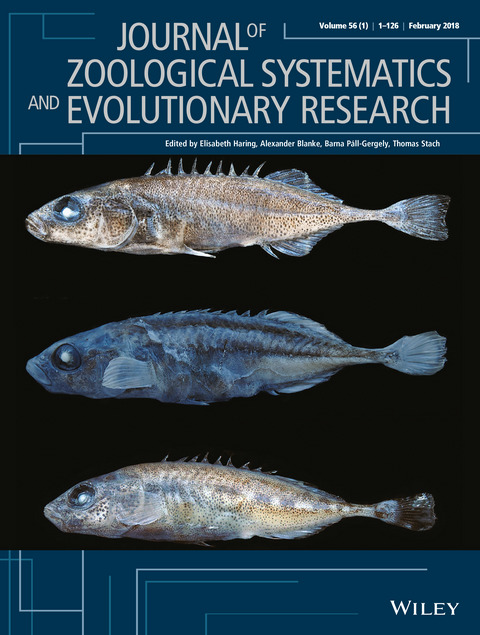
The cover image, by Gaël P. J. Denys et al., is based on the Original Paper Genetic and morphological discrimination of three species of ninespined stickleback Pungitius spp. (Teleostei, Gasterosteidae) in France with the revalidation of Pungitius vulgaris (Mauduyt, 1848), DOI 10.1111/jzs.12178.
Multilocus phylogeny and species delimitation within the genus Glauconycteris (Chiroptera, Vespertilionidae), with the description of a new bat species from the Tshopo Province of the Democratic Republic of the Congo
- Pages: 1-22
- First Published: 22 August 2017
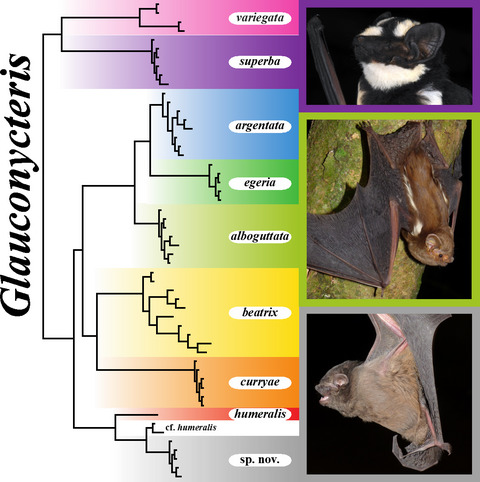
Here, we sequenced seven genes and examined morphological characters to investigate the systematics of Glauconycteris, an African genus of rarely recorded butterfly bat species. Our results support its monophyly, its association with Hesperoptenus, a sister-group relationship between G. superba and G. variegata, and a group containing all small species from tropical rainforests. A new species is described. A robust mito-nuclear discordance is observed for G. egeria. Our molecular dating estimates suggest a basal diversification at around 6 Mya. Glauconycteris superba (top, ©Alexandre Hassanin), Glauconycteris alboguttata (middle, ©Raphaël Colombo) and Glauconycteris sp. nov (bottom, ©Raphaël Colombo).
Parthenogenesis in Hexapoda: holometabolous insects
- Pages: 23-34
- First Published: 14 September 2017
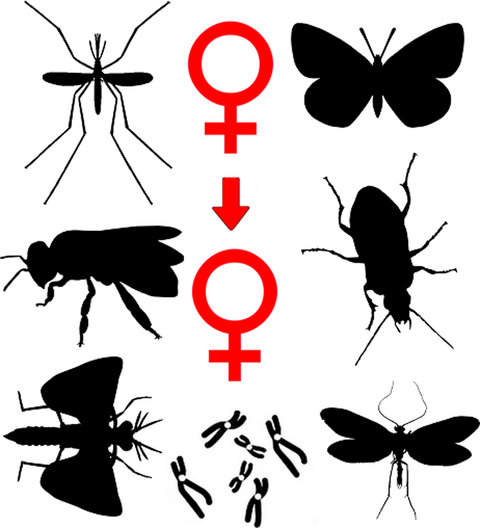
Parthenogenesis is recorded within six orders of holometabolous insects, namely Hymenoptera, Strepsiptera, Coleoptera, Trichoptera, Lepidoptera, and Diptera. For each order, the main parthenogenetic taxa and modes of parthenogenesis are listed. Data on parthenogenesis across Holometabola as well as other insects are summarized and discussed.
3D printing in zoological systematics: Integrative taxonomy of Labrys chinensis gen. nov., sp. nov. (Nematoda: Tylenchomorpha)
- Pages: 35-47
- First Published: 12 October 2017

A new nematode genus was described using integrative approach: Morphology, molecular phylogeny, and the intra- and inter-population variations of four sampled populations were analyzed. Three-dimensional printed models were incorporated in the description of a new nematode genus as a complement to pictures and drawings to illustrate complex 3D structures and to be used in education. Hereby, we also tested the performances of different printing materials and suggest resin as the most suitable option for the zoological field.
Phylogenetic relationships between the slave-making ants Rossomyrmex and their Proformica hosts in relation to other genera of the ant tribe Formicini (Hymenoptera: Formicidae)
- Pages: 48-60
- First Published: 19 September 2017
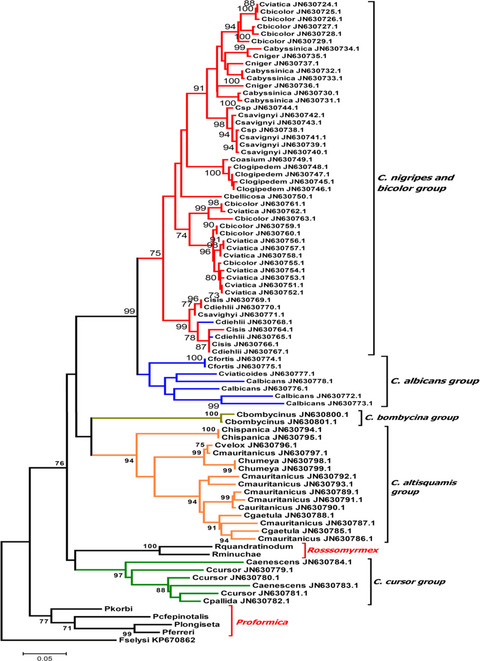
For the first time, we perform a phylogenetic analysis of the slave making ant genus Rossomyrmex and its host genus Proformica also including several species of their closely related genus Cataglyphis. Our results indicate that Proformica and Rossomyrmex are reciprocally monophyletic and that Rossomyrmex is nested within Cataglyphis, rendering the latter paraphyletic. A biogeographical reconstruction for parasite and host yielded Central Asia as the ancestral area for Proformica, whereas more studies are needed for the parasite.
New insights into the molecular phylogeny and taxonomy of mormyrids (Osteoglossiformes, Actinopterygii) in northern East Africa
- Pages: 61-76
- First Published: 26 September 2017
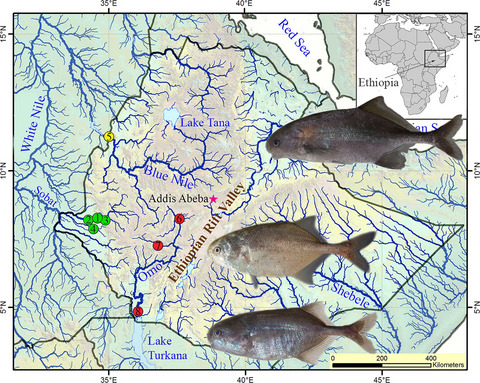
We clarified molecular phylogeny and taxonomy of Pollimyrus species from the Omo-Turkana basin and Nile system below the Murchison Falls. ‘Pollimyrus’ petherici is distantly related to the genus Pollimyrus and clusters together with Cyphomyrus species. The range of the genus Cyphomyrus is extended towards the Nile and Omo-Turkana basins. Two distinct lineages of Pollimyrus isidori occurring sympatrically in the White Nile tributaries and previously reported as the light and dark forms form a monophyletic group together with other congeneric species.
Genetic and morphological discrimination of three species of ninespined stickleback Pungitius spp. (Teleostei, Gasterosteidae) in France with the revalidation of Pungitius vulgaris (Mauduyt, 1848)
- Pages: 77-101
- First Published: 21 September 2017
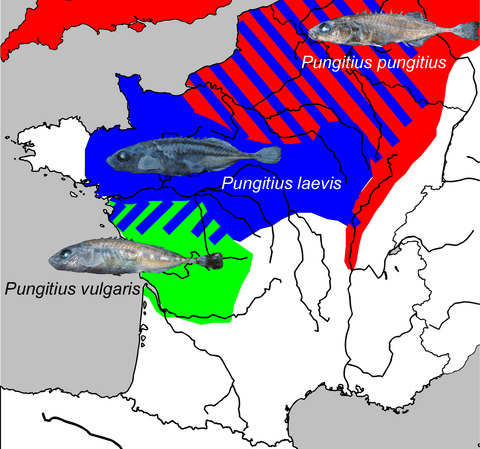
This study is an integrative taxonomical review of French nine-spined sticklebacks (Pungitius spp.): morphological, mitochondrial (COI), and nuclear (RNF213) data. The results highlight three species in France: Pungitius pungitius (North of France and Rhone basin; red), Pungitius laevis (English Channel basins and Loire drainage; blue), and the endemic Pungitius vulgaris (from the Vienne River to the Garonne estuary; green). Our results confirm the existence of a hybridization zone in the North of France between P. pungitius and P. laevis.
Phylogeography and ecological niche modeling unravel the evolutionary history of the African green toad, Bufotes boulengeri boulengeri (Amphibia: Bufonidae), through the Quaternary
- Pages: 102-116
- First Published: 18 October 2017
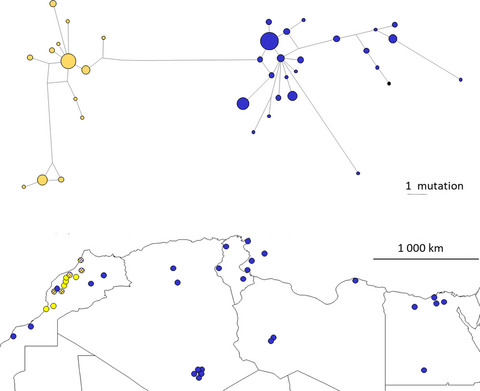
We widely sampled B. b. boulengeri from Morocco to Egypt. We found one haplogroup (yellow) endemic to coastal Morocco, and one haplogroup (blue) widely distributed throughout North Africa. No or little genetic differentiation is observed between isolated populations from the Hoggar Mountains, the Sabha district, and the islands of Kerkennah and Lampedusa, compared to others populations. This can be explained by the expansion of the distribution range of B. b. boulengeri during glacial periods.
Cytogenetics of the Javan file snake (Acrochordus javanicus) and the evolution of snake sex chromosomes
- Pages: 117-125
- First Published: 29 August 2017
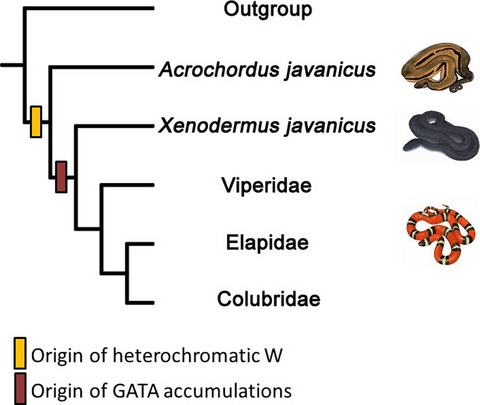
Our cytogenetic analysis of the Javan file snake (Acrochordus javanicus) shows that heteromorphic ZZ/ZW sex chromosomes with a heterochromatic W chromosome are likely synapomorphies of advanced snakes (Caenophidia). The Javan file snake lacks an accumulation of Bkm repeats, consisting of tandem arrays of the tetranucleotide motifs GATA and GACA, and interstitial telomeric repeats on the W chromosome. This observation supports the sister position of acrochordids to all other caenophidians and questions the role of Bkm repeats in the formation of snake sex heterochromatin.




